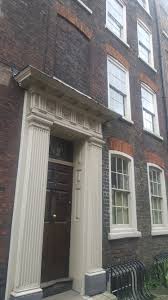Tower Hamlets: A Closer Look at Its Significance

Introduction
Tower Hamlets, located in East London, is one of the most diverse and historically rich boroughs in the UK. Home to a large population of over 300,000 residents, it has become a hub for culture, commerce, and community engagement. The importance of Tower Hamlets extends beyond its geographical boundaries, influencing economic trends and cultural narratives across London. This article examines the current status and significance of Tower Hamlets in today’s society.
The Diversity of Tower Hamlets
Tower Hamlets stands out for its impressive cultural tapestry, with over 150 ethnic groups residing in the area. The borough is known for its historical landmarks such as the Tower of London and the vibrant markets of Brick Lane, which celebrate the rich history of Bangladeshi culture. Events like the annual ‘London’s Banglatown Festival’ further highlight the area’s community spirit and dedication to cultural exchange.
Economic Development and Challenges
In recent years, Tower Hamlets has experienced significant economic growth, spurred by its close proximity to the City of London. The Canary Wharf financial district has attracted numerous businesses, contributing to local employment and infrastructure development. However, the borough faces challenges, including a high cost of living and income inequality. According to recent data from the Greater London Authority, nearly 25% of residents live in poverty, a stark contrast to the wealth generated in the area. Addressing these disparities is crucial for sustainable growth.
Community Initiatives and Local Government
The local government of Tower Hamlets has been actively involved in implementing initiatives aimed at improving living conditions and fostering economic opportunities. Programmes focusing on education, healthcare, and housing are prioritised to uplift community welfare. Additionally, the ‘Tower Hamlets Together’ initiative encourages residents to engage with local decisions and services, promoting a sense of ownership and partnership between the authorities and the community.
Conclusion
Tower Hamlets embodies the complexities of urban life in London, where a rich cultural heritage meets rapid economic development. As the borough continues to grow and change, it serves as a case study for urban development, community resilience, and social challenges faced by many metropolitan areas. Future policies and outreach programmes will play a crucial role in ensuring that all residents can benefit from the opportunities presented by living in this dynamic borough. For readers, understanding the nuances of Tower Hamlets is essential not only for appreciating London’s diversity but also for acknowledging the ongoing discussions on inequality and community resilience.
